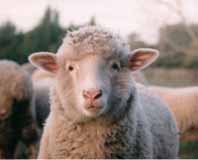Read the latest information on
Foot-and-mouth disease
 A loose ram wandering an outer suburb of Canberra may have captured the imaginations of local residents, but has prompted Animal Health Australia to issue a reminder to sheep producers about the importance of biosecurity, starting with a good fence.
A loose ram wandering an outer suburb of Canberra may have captured the imaginations of local residents, but has prompted Animal Health Australia to issue a reminder to sheep producers about the importance of biosecurity, starting with a good fence.
It pays to remember the risks that livestock can pose to human and animal health, according to Dr Simon Humphrys, Executive Manager Biosecurity and Product Integrity.
“Stray livestock pose as great a risk to farming operations as feral animals and wildlife, if not greater,” Dr Humphrys said.
“Without wanting to put a damper on the excitment for those who have welcomed the ram into their community, loose cattle and sheep can also be a hazard to people.”
Peri-urban areas on the edge of major metropolitan and regional cities often feature many small flocks and herds in close proximity to one another and to people.
Stray animals that are free to interact with many different flocks risk spreading endemic diseases, such as footrot, and complicates the already difficult task of tracing affected animals in the event of an emergency disease outbreak.
“The disease risk is compounded by the fact that this ram is wandering around a suburb, so can easily interact with many people and companion animals” Dr Humphrys explained.
“Many animal diseases, Q Fever being among the worst of them, are zoonotic; meaning they can also infect humans.”
There’s also the more obvious hazards to consider; due to the high concentration of farms and bushland the Canberra region also has one of the highest rates of car accidents involving wildlife.
“Livestock are fairly used to people and vehicles and they’re not always the fastest animals on four legs,” Dr Humphrys.
“Accidents happen, and that’s never good news for the animal or driver.”
Other concerns, such as whether the escapee ram has been exposed to dangerous chemicals, are less apparent. Fortunately, the ram has been observed to have ear tags, meaning once caught, authorities will be able to send him home.
“We’ll also be able to keep an eye on him throughout his life and ensure that anything he may have been exposed to doesn’t leave a residue that might threaten human and animal health or food safety,” said Dr Humphrys.
With the risks in mind, Dr Humphrys is urging producers to stay vigilant regarding on-farm biosecurity measures, especially the integrity of fences.
“A good fence means wandering animals of all kinds are less likely to introduce a disease to your property,” he explained.
“It also stops your livestock from being the animal which escapes to wander the nearby suburb.”
Producers wanting to know more about biosecurity for their sheep, or about controlling feral animals, can find a host of information on the Farm Biosecurity website.